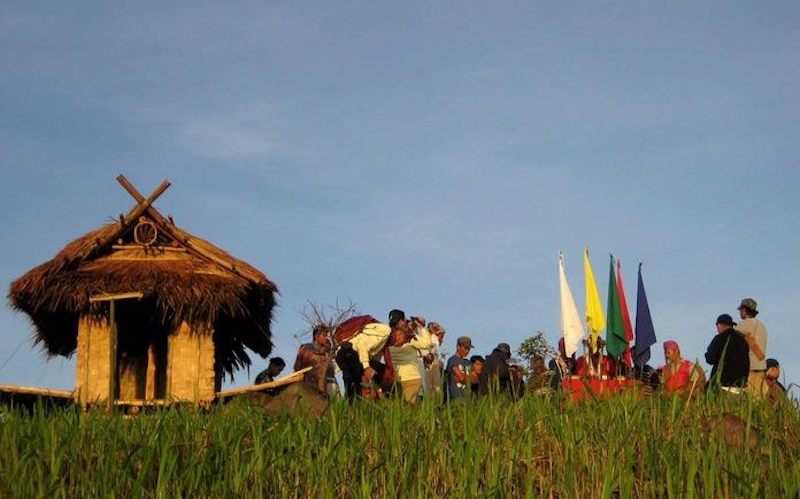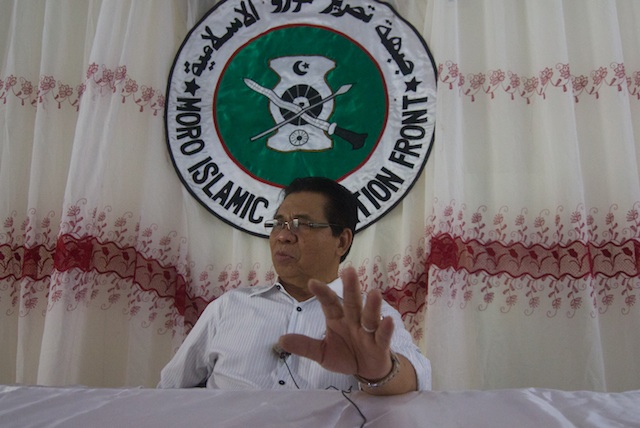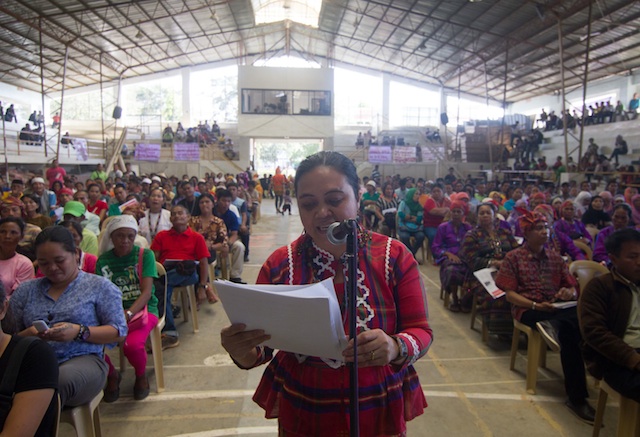DAVAO CITY (MindaNews / 27 August) – August 9 was National and International Indigenous Peoples Day but there was no celebration among Indigenous Peoples in the Bangsamoro Autonomous Region in Muslim Mindanao (BARMM) as they are still awaiting the passage of the Indigenous Peoples (IP) Code that the Bangsamoro leadership has repeatedly vowed would be more than what the national law – Indigenous People’s Rights Act (IPRA) – provides.
There are only10 months left until the end of the transition period on June 30, 2025 and only 48 session days from August 28 until the 80-member Bangsamoro Transition Authority (BTA) adjourns its legislative sessions on February 27, 2025, according to Resolution 442 on the Bangsamoro Parliament’s calendar of sessions.
The BTA resumed sessions on August 19.
Before it went on recess in mid-July it passed Parliamentary Bill 273 or the Bangsamoro Indigenous Peoples Development Act (BIPDA) at the level of the Committee on Indigenous Peoples Affairs (CIPA).

Non-Moro Indigenous Peoples (NMIPs) had earlier expressed disappointment on the CIPA’s public consultations for allegedly being “inadequate for meaningful democratic participation, due to the sudden changes in schedule, and the limited time allotted for our engagement.”
PB 273 was filed by the Government of the Day on January 25 this year and its first reading was on February 21.
The Committee has yet to present the report to the plenary but Member of Parliament Froilyn Mendoza, one of two non-Moro IPs in the BTA, told MindaNews that the committee report is expected to be presented on August 28.
“We know the hardship of being a minority”
Ten years ago, also in August, Al Haj Murad Ebrahim, chair of the Moro Islamic Liberation Front (MILF), now known as Bangsamoro Chief Minister Ahod “Al Haj Murad” Ebrahim, assured the IPs in the then proposed Bangsamoro autonomous region that they will not allow them to experience what the Moro people had gone through because “we have experienced being the minority and we know the situation, we know the hardship of being a minority, of being a victim of oppression.”
“We are assuring them that we will not repeat the same situation where a majority will oppress the minority,” Murad told MindaNews in a sit-down interview four months after the signing of the Comprehensive Agreement on the Bangsamoro (CAB). At that time, they were preparing for the passage of the Bangsamoro Basic Law under the Aquino administration, but the CAB’s enabling act, RA 11054 or the Organic Law for the BARMM, was passed by Congress under the Duterte administration in July 2018 and ratified in January 2019.

Murad said oppressing the IPs and doing them injustice would mean “opening a door for them to wage another struggle against the Bangsamoro people.”
According to an IP Dev 2013 survey among 80 barangays in 12 towns “with sizeable IP population” in the mainland of the Autonomous Region in Muslim Mindanao (ARMM), the total IP population there was 117,189, with the Tedurays numbering 110,559, followed by the Lambangian with 3,139, the Dulangan Manobo with 2,904, Higaonon with 161 and 17 other ethnic affiliations with less than a hundred each.
The ARMM, the core territory of what would be the BARMM in 2019, had a population of 4.7 million as of 2013, according to the ARMM website then. The population of the BARMM – now constituting the defunct ARMM’s Maguindanao, Lanao del Sur, Basilan, Sulu and Tawi-Tawi and the cities of Marawi and Lamitan plus Cotabato City and the 63 villages (now eight towns) in North Cotabato known as Special Geographic Area, is 4.9 million as of the May 2020 census.
Murad in 2014 said the draft Bangsamoro Basic Law had “so many provisions that are addressing the rights of the Indigenous Peoples,” including a provision for the Bangsamoro government to establish a ministry specifically for the IPs, to ensure their concerns are addressed.
Murad was referring to what is now the Ministry for Indigenous Peoples’ Affairs (MIPA).
“Give us a chance”
In a speech at the Moro-IP Solidarity Event at the EDSA Shangrila Hotel on May 23, 2014, Mohagher Iqbal, then MILF peace panel chair and concurrent chair of the Bangsamoro Transition Commission that drafted the Bangsamoro Basic Law, said “Give us the chance to prove that in the Bangsamoro, the IPs have a bright future. This we will prove once the Bangsamoro is in place,” he said. Iqbal is now Education Minister and chair of the MILF Peace Implementing Panel.
Iqbal, who signed the CAB for the MILF on March 27, 2014, admitted that the IP issue “has been one of the most difficult and complex concerns I addressed as chair of the BTC.”
“Understandably, groups held on to unshakable ancestral domain claims backed by clashing interpretation of international and domestic legal and political principles. Yet, a zero-sum, take no prisoners’ approach in addressing this complex issue proved counter-productive and destructive of relationships that are key to building peace in our communities,” he said, adding they made progress “only when we took on a new lens and develop(ed) a new language that will foster unity, not division, in our communities,” he said.
Iqbal added that with the new lens, “we can now imagine a Bangsamoro where all groups equitably and mutually reap what have been gained in our quest for self-determination on top of rights already enjoyed by each and every person or group.”
“We should focus our energies to weaving our beliefs, laws and rights towards forming a tapestry of peace, unity and progress in the Bangsamoro,” he said.
NMIPs speak up
A joint statement by the Indigenous Political Structures of the Timuay Justice and Governance, Menubu Dulangan Tribal Justice and Self Governance and Menübü Dalangan Münov Keiwit Kitabi in May pushed for a “genuine Non-Moro Indigenous Peoples Code” that “recognizes our Identities, our ancestral domains, and our collective rights.”
PB 273 as filed did not specifically mention NMIPs and they are not in the definition of terms even as this was specified under RA 11054 or the Organic Law for the BARMM. The law even provides for two reserved seats for NMIPs.
PB 273 referred to “all Indigenous Peoples” in the BARMM.
The NMIPs expressed “deep concern about the future of our ancestral domains and our collective rights” if PB 273 is passed as the IP Code as it is “far from the NMIP Code we envisioned” and “fails to recognize our self-ascription as Non-Moro Indigenous Peoples.”
They proposed a code that is rights-based, noting that “the ‘developmental’ framing of Bill 273 falls short in capturing our interconnected collective rights as Indigenous Peoples.”
“We propose that a linear view of development should not be imposed on us. We follow the United Nations Declaration on the Rights of Indigenous Peoples’ (UNDRIP) concept on the ‘right to development’ where we determine what kind of development is right for us and how it should be implemented,” they stressed.
“Our rights should be recognized as bundles, not parceled into different legislations” and that the proposed IP Code “must articulate all rights accorded to us by international treaties, national laws, and regional laws as legal bases, one that “recognizes our native titles and ancestral domains.”
They emphasized that the proposed IP Code “should allow our ancestral domain claims to be processed” and that the Bangsamoro government “must recognize and respect the areas within its jurisdiction where there are existing Certificate of Ancestral Domain Titles (CADTs),” specifically citing CADT 164 of the Erumanen ne Menuvu, part of which is located in the SGA and CADT 229 of the Mënubù Dulangan in Ampatuan, Maguindanao del Sur, and the Tëduray and Lambangian Ancestral Domain Claim which has been pending since 2005.
They urged the BTA to support “our self-determined NMIP Code” which “can enable the full realization of our indigenous rights – which, in our view, is a vital aspect of a moral and inclusive governance in the Bangsamoro region.”

Mendoza is the principal author, along with MP Eddie Alih, of Parliamentary Bill 166 or the proposed Non-Moro Indigenous Peoples Rights Act in the Bangsamoro Autonomous Region in Muslim Mindanao. It was filed on April 11, 2023 and had its first reading on June 21, 2023.
NMIPs and MIPs
In the Committee deliberations, it was agreed that the term NMIPs is in the proposed IP Code, along with what is proposed to be referred to as MIPs or Minority Indigenous Peoples (MIPs).
PB 273 applies to the Teduray, Lambangian, Dulangan Manobo, Erumanun Ne Menuvu, Higaonon, B’laan who are classified as NMIPs, and the MIPs of the island provinces of Basilan, Sulu and Tawi-Tawi, such as the Sama Dilaut, Sama Bangingi, Sama Mapun, and Sama Pangutaran.
A unified statement from the NMIPS and MIPs proposed that the title of the law be “The Rights of Non-Moro Indigenous Peoples and Moro Indigenous Peoples in the Bangsamoro Act of 2024.”
Mendoza said she has yet to receive a copy of the report of the Committee headed by fellow IP, MP Ramon Piang Sr., but noted that they were able to push for, among others, inclusion in the proposed IP Code a provision that IPs as rightful owners of their ancestral domains are “recognized as the owners of those parts of their ancestral domains that have been occupied by military camps, their associated residential and work or livelihood areas, and infrastructure.” (Carolyn O. Arguillas / MindaNews)
READ ALSO:
SPECIAL REPORT: From RAG to ARMM to BARMM: the IP’s struggle for ancestral domains continues
0 Comments